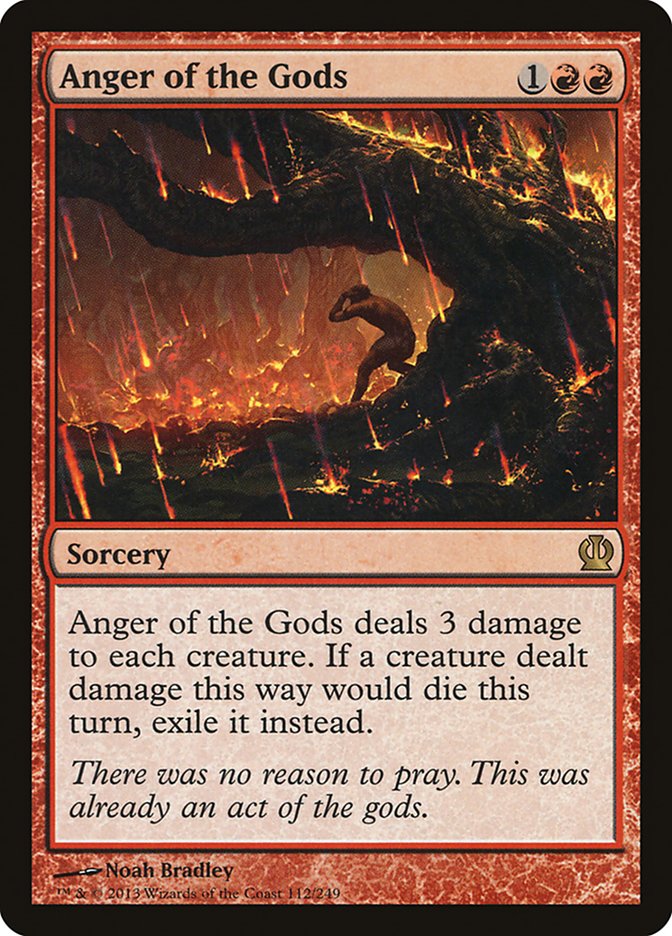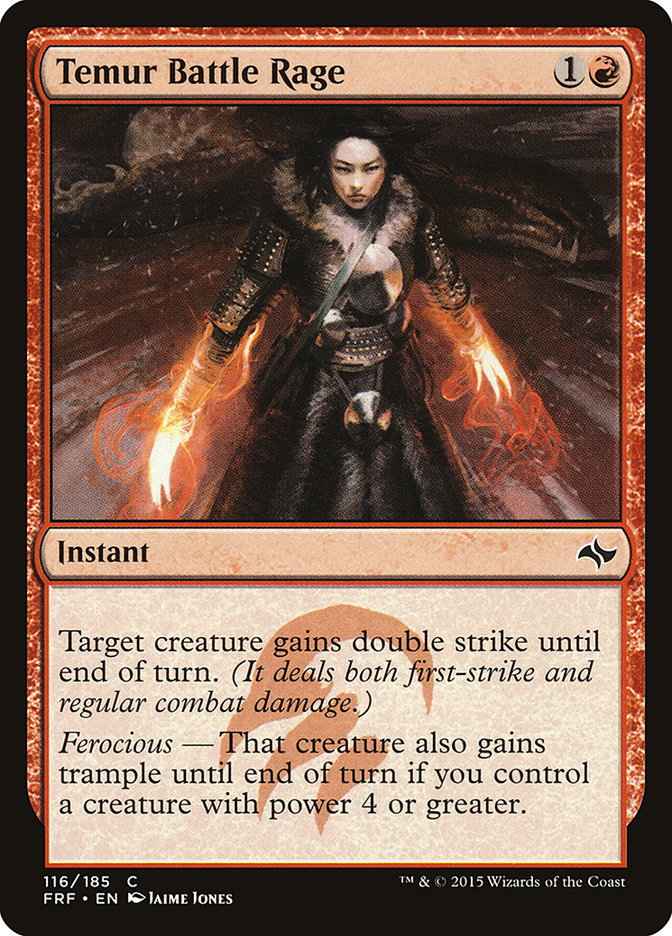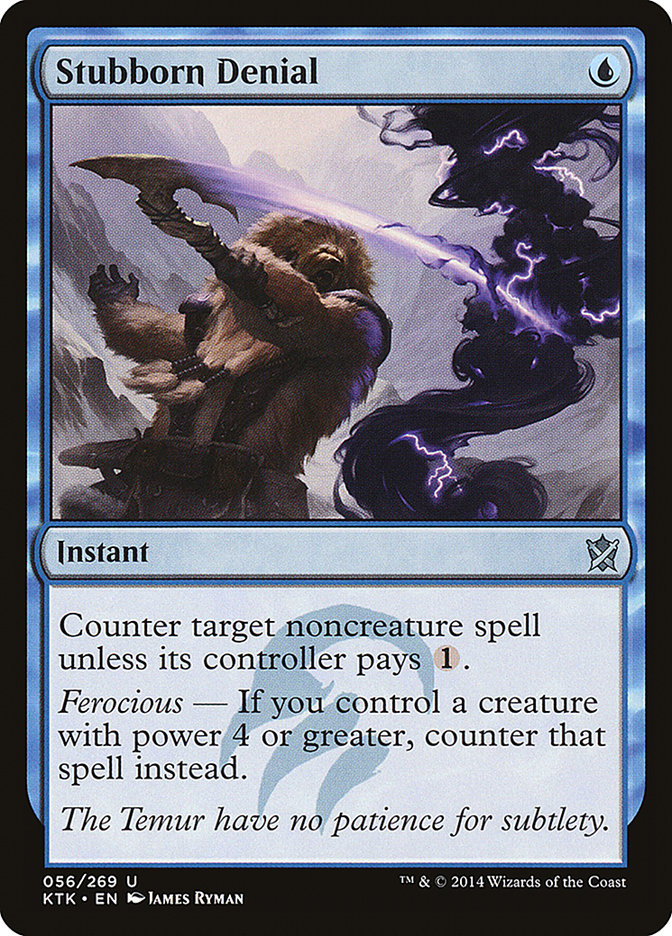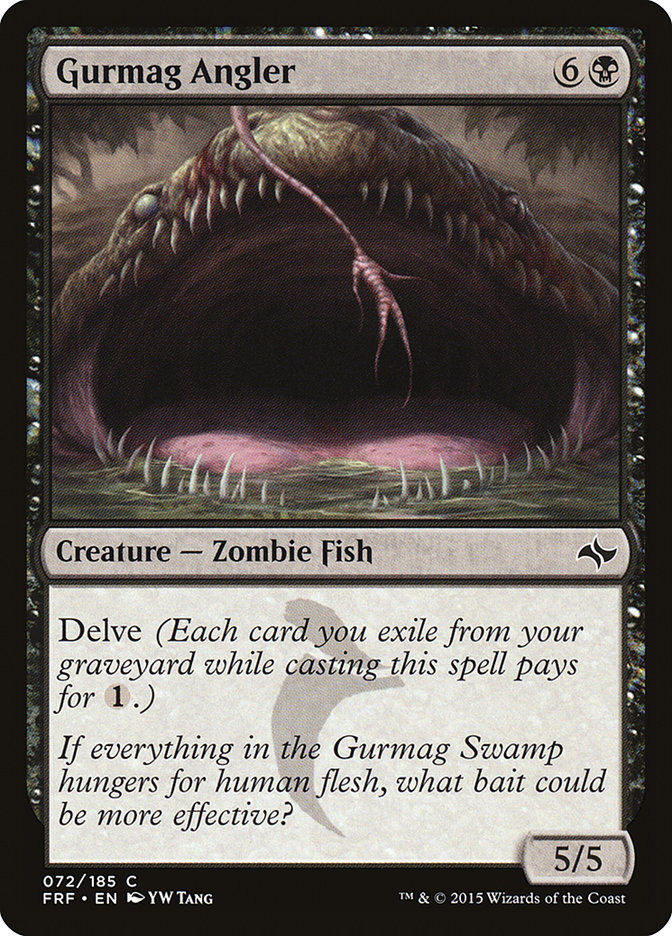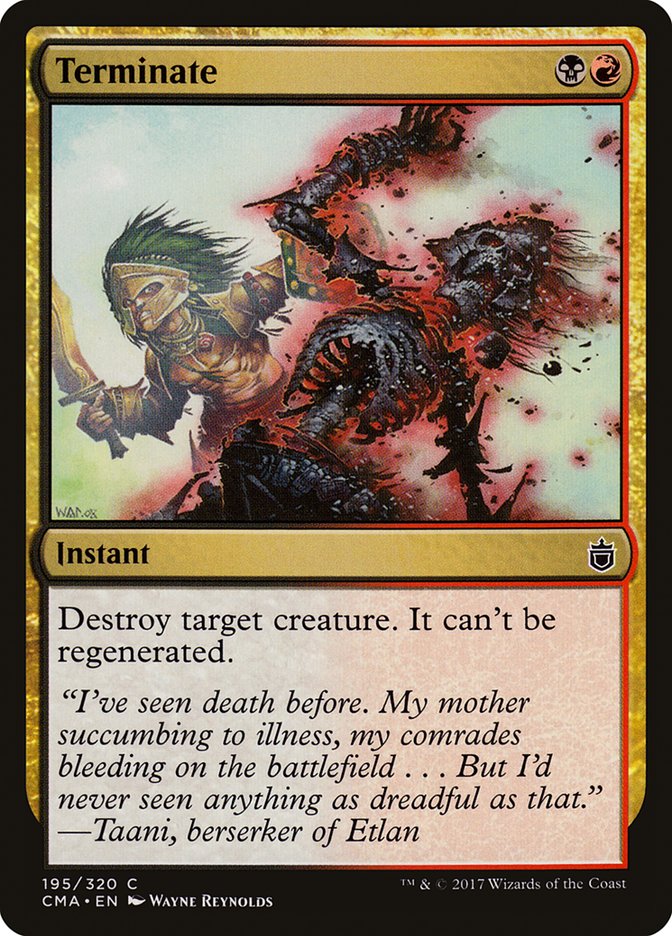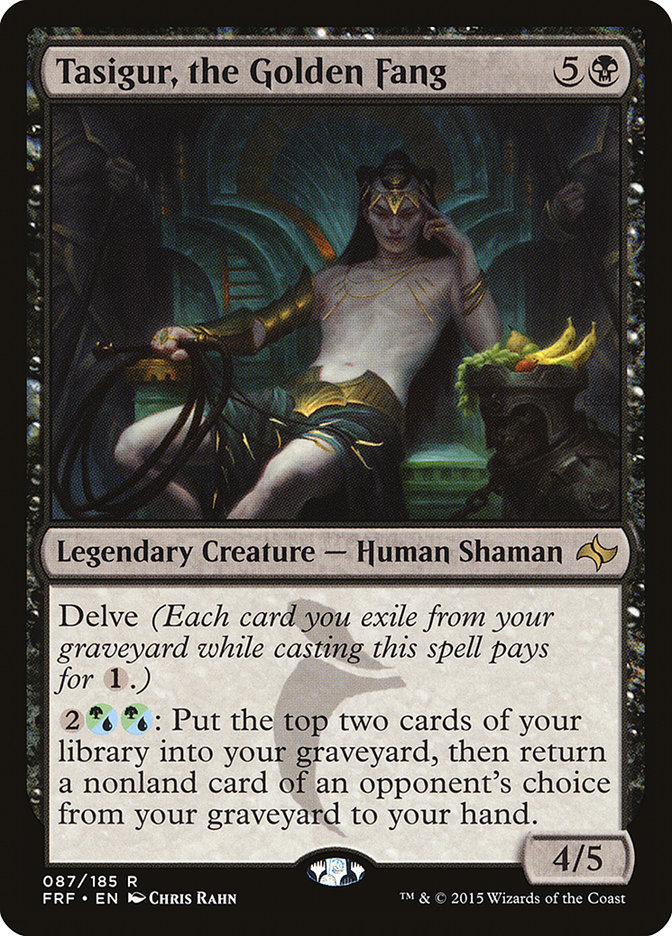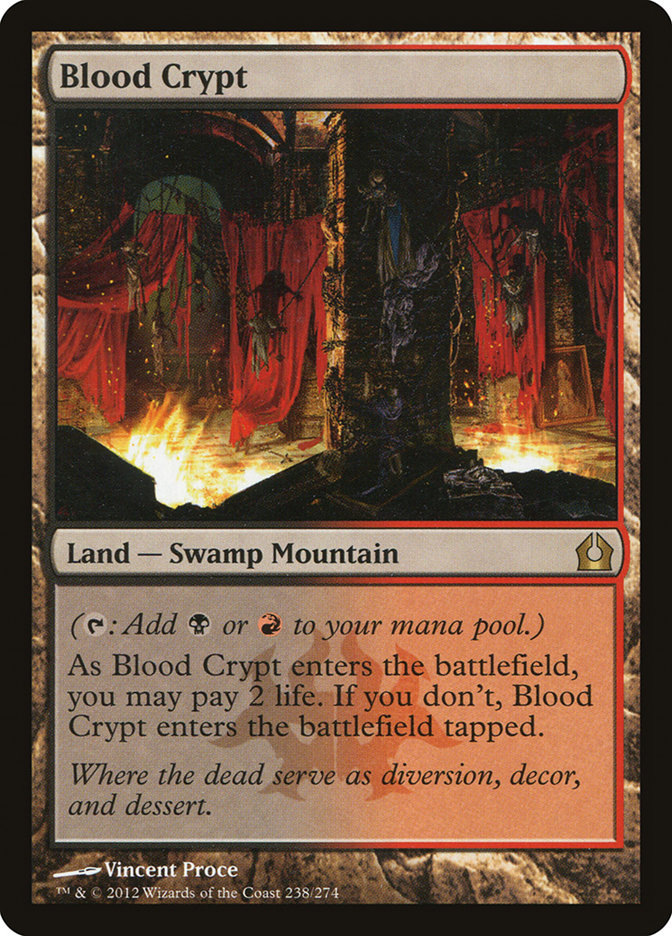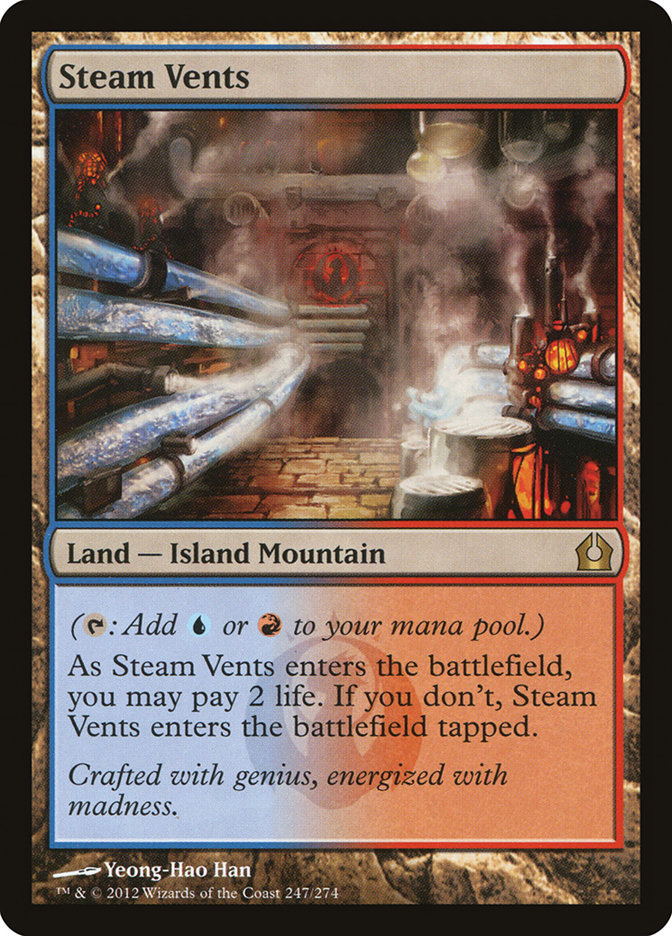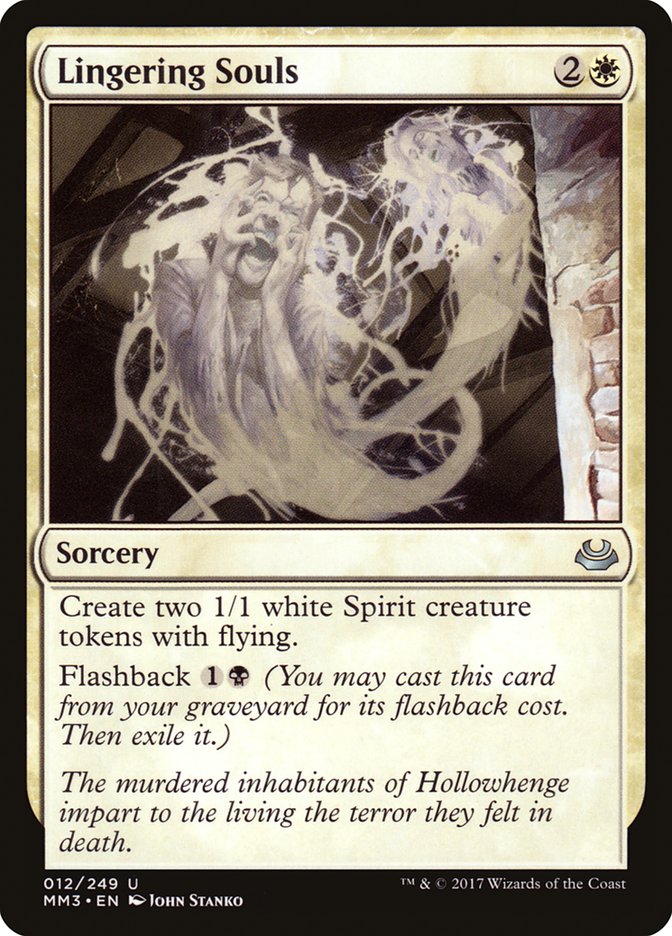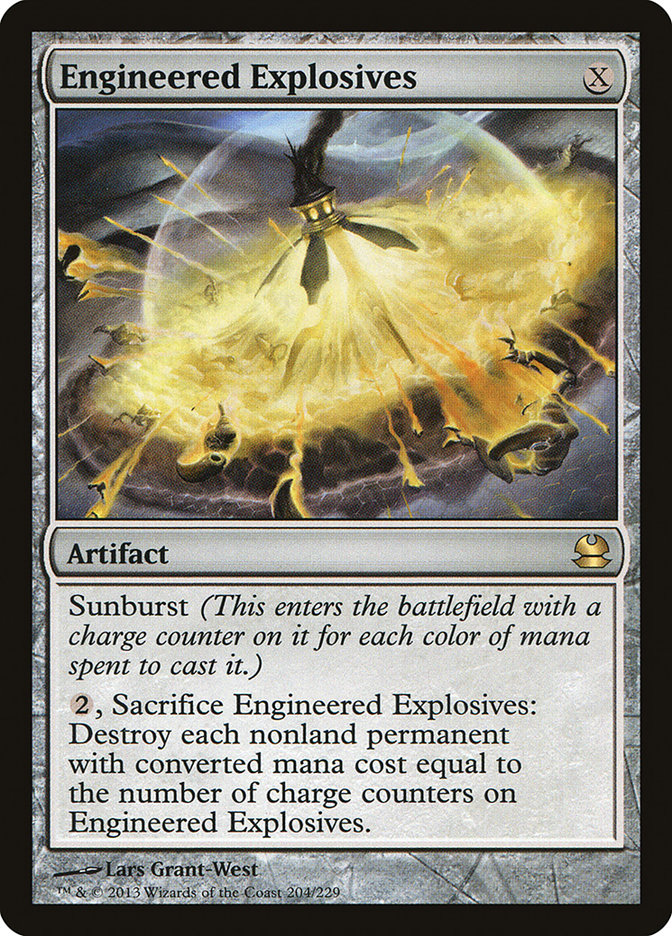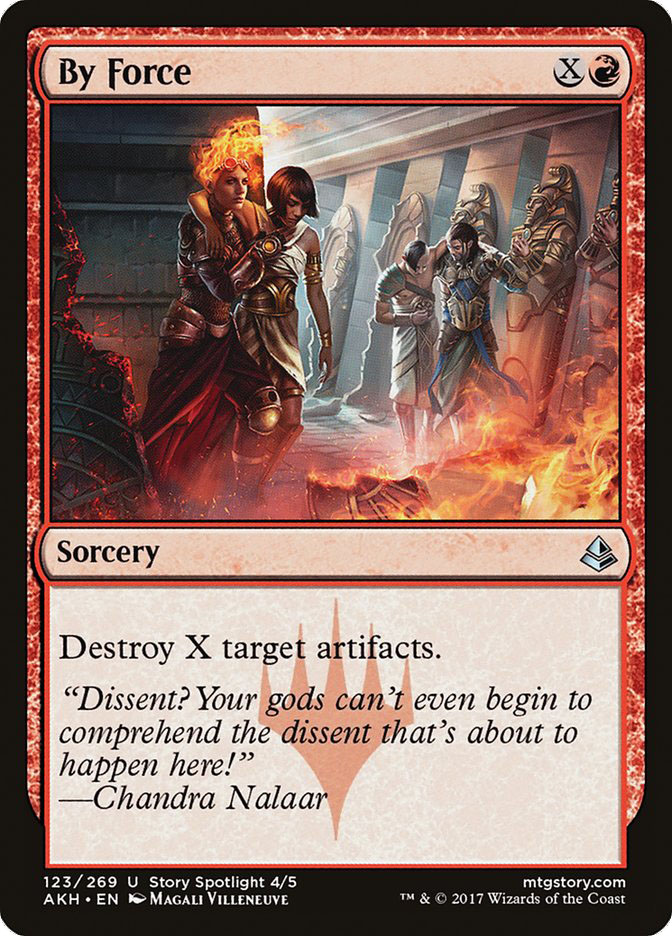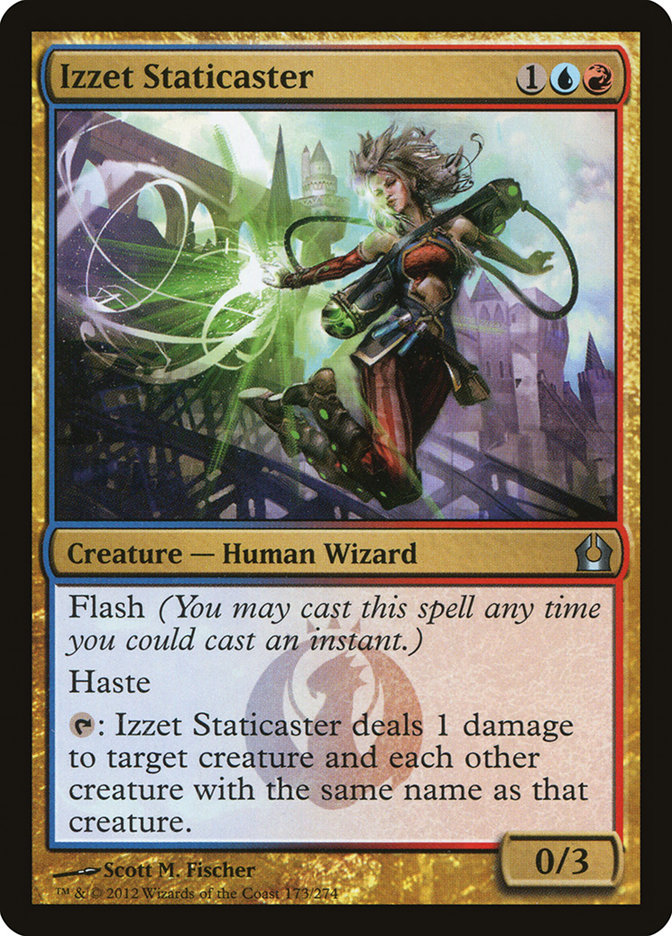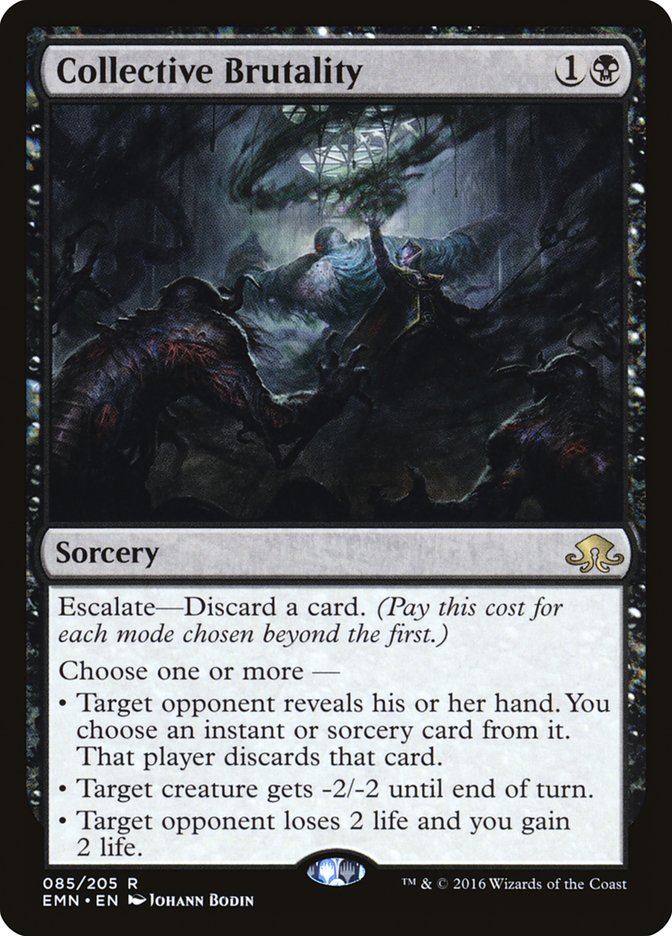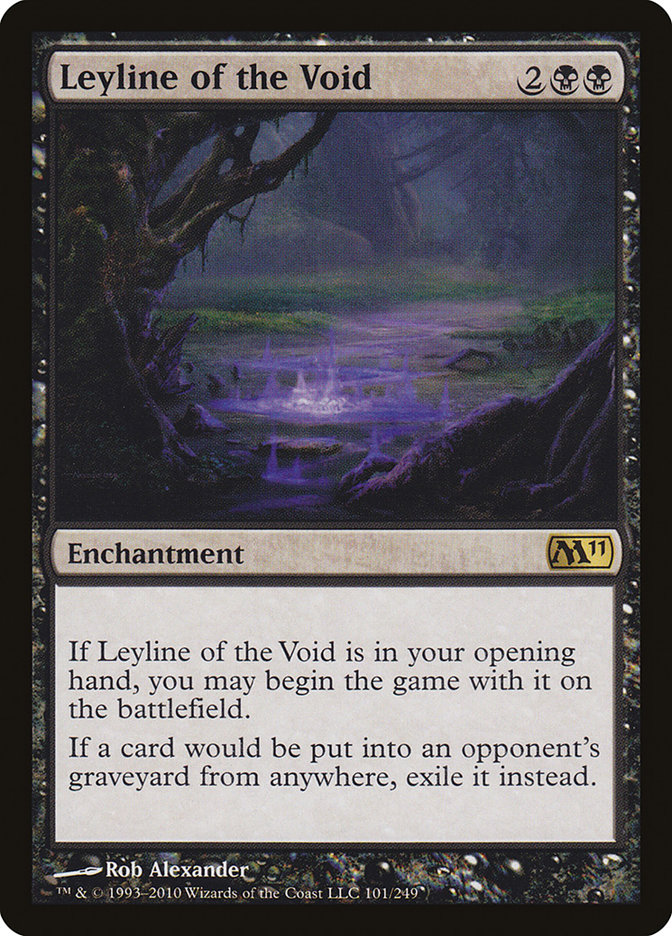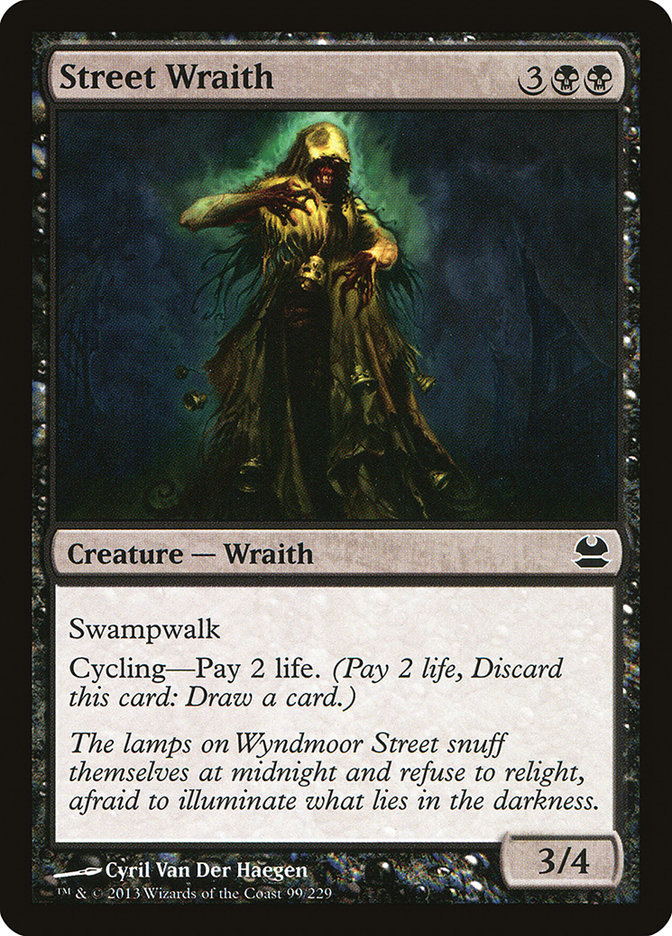It’s no secret that I like Grixis, and it’s no secret that I like Death’s Shadow. I also like winning, so I’ve been trying to make better decisions regarding deck selection recently. What I like the most is when all the things I like coincide with each other.
The next event I’m going to is Grand Prix Las Vegas, and I’m very excited to play Grixis Death’s Shadow.
Why Grixis?
Jund was the first Death’s Shadow deck on the scene, but it’s perfectly reasonable to want to play Jund, Grixis, Sultai, Abzan, or Esper. Basically every three-color combination is viable for Death’s Shadow, although you’d probably have to do a lot of work to convince me on Mardu.
Each of these versions has the same gameplan of disrupting their opponents and presenting a fast clock, which is among the strongest strategies in Modern. What splashes you use determine which matches you’ll get the biggest edges in, though, and those details are going to make or break your entire tournament.
Red offers Kolaghan’s Command, Anger of the Gods, and Temur Battle Rage. White gives you powerful sideboard cards and one of the strongest removal options in Path to Exile.
Green has Tarmogoyf and Traverse the Ulvenwald to add threat density. Blue gives you Snapcaster Mage to help you in grindy games and Stubborn Denial to stop spell-based combo and protect your threats.
Depending on what you think your deck needs to fight the metagame properly, each color offers you something different. Obviously you can blur the lines to some degree and play four or five colors if you want, but I wouldn’t recommend it. If your deck absolutely needs that fourth or fifth color, you should probably just play that shard or wedge.
With Dredge and mirror matches on the rise, Grixis seems like obvious option. Anger of the Gods and Snapcaster Mage are the main things I want, although getting great mana and Stubborn Denial are upsides are well.
If I were playing a big Modern tournament tomorrow, I would register this:
Creatures (16)
Lands (19)
Spells (25)

The Creatures
We are playing the full amount of Death’s Shadows and Street Wraiths. The only real debates: how many Snapcaster Mages do you want, and what’s the split between the delve creatures?
Snapcaster Mage is much better in post-sideboard games than in Game 1, as you have much more powerful cards to flash back after sideboarding. The games also get grindier and therefore more attrition-based. However, I would argue that Snapcaster Mage’s ability to help grind is one of the primary reasons to play Grixis over Jund, and that matters even in Game 1. If I did shave a Snapcaster Mage, it would be for a removal spell, and Snapcaster Mage is effectively that.
Gurmag Angler is a solid beater, but Tasigur, the Golden Fang has additional late-game applications. It might look lazy to split them 2/2, but I think it’s actually correct. One of the most tempting arguments is how Gurmag Angler wins in a fight against Tasigur, but the extra mana can be the difference between playing a threat on turn 2 or turn 3. The fact that Tasigur is legendary also matters.
The Spells
With the creature base mostly established, most of the maindeck tuning is going to come down to how much disruption and which removal spells you play. Lightning Bolt was originally played in small numbers, as Snapcaster Mage plus Lightning Bolt is a great way to help close games. However, Lightning Bolt is incredibly weak right now.
I’m worried about mirrors, Dredge, and various Eldrazi decks, not Infect or Affinity. Burn and Counters Company are real decks, but Death’s Shadow is accidentally favored against them, plus you already have four Fatal Push. I’d rather have Terminate as my secondary removal spell to fight bigger creatures.
Instead, I’m opting for maindeck Terminates, which are basically a necessity with all the Gurmag Anglers and Tasigur, the Golden Fangs running around. As it turns out, Fatal Push doesn’t kill everything.
Six discard spells feels like the right number. You don’t want to flood on them, plus you have Stubborn Denial for additional disruption against combo decks. The games tend to go longer in Grixis than in Jund, largely because of the presence of Snapcaster Mage, so I try to avoid having too many dead topdecks.
Past that, the only odd thing I’m doing is playing the third Stubborn Denial. I’m certainly worried about flooding on them, but the card lines up well against most of the big strategies. It’s kind of a gamble, and I could certainly play it safe by only playing two, but I think it’s worth the risk.
If you don’t want to play the third Stubborn Denial, I would have a Lightning Bolt instead. I’m convinced the other 59 cards are correct.
You could include Temur Battle Rage in Grixis, but it occupies the same deck space as Stubborn Denial, and Stubborn Denial seems better to me right now. Both cards function as ways to lock up a game where you’re ahead. With Stubborn Denial, you’re hopefully locking it up by countering a key spell that gives you the extra attack step to kill them, whereas Temur Battle Rage will kill them outright.
There are matchups like Dredge and Affinity that go wide and can chump block your threats while clocking you, which is where Temur Battle Rage shines. Those tend to be your toughest matchups, but they are also a small percentage of the field. Anger of the Gods tends to fix those problems in the post-sideboard games.
Some have suggested playing both, but it doesn’t really make any sense. They both do different things and therefore have very little synergy with each other. There are corner-case scenarios where you need to Temur Battle Rage and use Stubborn Denial to protect your threat, but if Temur Battle Rage were any other card, would you still need Temur Battle Rage’s effect?
Stubborn Denial is also the more consistent card, as is it dead less frequently than Temur Battle Rage. Arguments exist for each, but Stubborn Denial seems much better.
The Manabase
Jund Death’s Shadow only plays eighteen lands, mostly because of Mishra’s Bauble acting as a free cantrip, but also because Traverse the Ulvenwald can find Swamp in a pinch. In Grixis, you have a mana-intensive late-game that consists of Snapcaster Mage, Kolaghan’s Command, and Tasigur, the Golden Fang. It’s one of the biggest draws to playing Grixis in the first place, and you need mana to use those spells effectively.
If my gameplan involves getting to three land (and excess land is sometimes a good thing), I’d prefer to use my cantrips to dig for action, not lands. There are also the situations where you need your mana in the early game to be interacting with your opponent, not setting up your draws. With Serum Visions and Thought Scour, you could play eighteen land and still function, but I’d rather err on the side of caution.
When your plan is to Snapcaster a Kolaghan’s Command, eventually you’re going to want to hit your fifth land drop. Because of that, it’s important to play both basic lands so you’re not pigeon-holed into always fetching an untapped shockland.
The second Blood Crypt is because you don’t want all of your extra lands to be fetchlands. If you’re naturally drawing a shockland, Blood Crypt is better than Steam Vents most of the time because you need multiple black mana early. It could be worse than an additional Watery Grave, but I also want to be able to cast my sideboard Anger of the Gods reliably.
The Sideboard
First of all, I’d like to say that splashing for Lingering Souls is a trap. The Spirits are only relevant if you’ve both killed each other’s threats, and even then, your Spirits might get gobbled up by Liliana, the Last Hope or Maelstrom Pulse. If your opponent is prepared, I’m willing to wager that Lingering Souls will accomplish very little.
Having access to counterspells solves a host of problems for Death’s Shadow. Ceremonious Rejection is fantastic against Eldrazi, Karn Liberated, Ugin, and Etched Champion, which no other card can boast. The fact that it fits your gameplan, works with Snapcaster Mage, and solves some of your biggest issues means that it’s a lock for the sideboard. Playing three copies is reasonable, but still narrower than I’d like. Instead, I have a Countersquall that solves many of the same problems, but also helps against Burn and spell-based combo decks.
Fulminator Mage is no longer necessary, especially once you have access to Stubborn Denial and Ceremonious Rejection. Instead of being on the mana denial plan against big mana decks, you can attempt to counter their threats instead. Combined with Snapcaster Mage, that plan actually works.
Engineered Explosives is a bad deal mana-wise, but its versatility is almost a necessity in Grixis. It fights small creatures, weirdo permanents, and tokens, and you’re not going to get that kind of utility from any other card. Since it’s clunky, I don’t want to draw more than one per game.
By Force is a nice addition that works well against Affinity, Lantern, and decks with Chalice of the Void. There are enough of those strategies that I like having a singleton way to punish artifacts.
As I mentioned earlier, Anger of the Gods is the reason to play red. Three pieces of graveyard hate isn’t enough to turn around the Dredge matchup, but Anger of the Gods picks up the slack. Additionally, the Counters Company decks are gaining popularity, and it helps in those matchups.
Ideally I would have a second copy of Liliana, the Last Hope to grind in mirror matches, but that might not even be the right way to go about things. I anticipate them bringing in some sort of graveyard hate, so there’s no guarantee that you’ll always be able to return a creature. It helps against Lingering Souls, but so does Izzet Staticaster. It is possible that Liliana, the Last Hope is just a much stronger version of Izzet Staticaster, though.
Collective Brutality helps against Burn and Collected Company. It can also double as additional discard against combo decks.
Leyline of the Void is something I may register for Grand Prix Las Vegas. Grixis Death’s Shadow is a huge appreciator of velocity, so Nihil Spellbomb is a welcome addition to the deck, but Leyline of the Void might be the hammer you need against Dredge and the true mirror.
For example, if you’re on the draw in the mirror, you cast a turn 1 Nihil Spellbomb, and they end of turn Thought Scour themselves, are you supposed to sacrifice the Nihil Spellbomb? I don’t think so, because they’ll still have a full hand and will be able to deploy a delve fatty at some point in the near future anyway.
In those situations, Leyline of the Void is typically going to be much better, especially since it reduces their threats to just the Death’s Shadows. Then again, the games will still likely go on for a while, and each Leyline of the Void you draw will be a dead card. If you don’t have one in your opening hand and draw them later, it’s a disaster.
I wanted another way to remove big creatures in my sideboard, so I have a singleton Dreadbore. It has fringe applications against planeswalkers, and being a sorcery doesn’t seem like a big deal against most of the decks I’m bringing it in against. Of my sideboard cards, it’s the weakest, as all it does is add tiny percentage points, but it does round out the sideboard in a nice way.
Overall, the Countersquall and Dreadbore are cuttable, but I like everything else.
How to Sideboard
Jund Death’s Shadow
In:
Out:
If you see Godless Shrine, sideboard in the Izzet Staticaster for the last Street Wraith.
Many advocate taking out discard spells in the pseudo-mirror, but I firmly believe that to be wrong. These aren’t Jund mirrors where the games always devolve into topdeck wars. Sometimes that’s the case, but you probably made it into those situations because you had one mana interaction. If you don’t interact early and they do, it’s possible that they’ll be able to run away with the game.
It’s not uncommon for the discard spells to be live going late, either. If neither of you has a threat, you’re probably holding onto a removal spell or two, and discard trades cleanly with them.
The planeswalkers are another reason why you absolutely need to keep in the discard spells. Yes, all of your topdecks will be live if you cut the discard, but if you have to no way to preemptively stop their Liliana, the Last Hope from hitting the battlefield, you’re still going to lose.
Discard spells are the wrong cards to cut. What you should actually be looking to cut is Stubborn Denial. You might think that using Stubborn Denial to protect one of your threats is a great plan in the pseudo-mirrors, but it rarely works out that way. With all the disruption from both sides, you’ll often find yourself playing in a low resource game. At that point, you’ll wish Stubborn Denial was anything else.
I’ve played games where I’m sitting on Stubborn Denial trying to protect the queen, but lose it to a topdecked (or sometimes held) discard spell. Having a proactive way to protect your threat is more beneficial.
I tend to shave Street Wraiths in the grindy matchups, at least when their plan is attacking me. Since the matchup is mostly about attrition, the games will likely go long. You want Street Wraith to turbo-charge your Death’s Shadows and Traverse the Ulvenwalds in the early game, but you don’t want to draw many of them past that. Topdecking a Street Wraith is a bad feeling, especially if you’re behind.
If you’ve played any Death’s Shadow mirrors, you’ve probably seen a Street Wraith get cast from time to time. A random card is almost always better than a 3/4 (although sometimes the swampwalking clock is a real threat), so it should be an indicator that late-game Street Wraiths are poor draws. If you are insistent on cutting Thoughtseize in the mirror instead, the life loss from Street Wraith is less of a deal. However, I do think it’s very, very wrong.
If you cut discard and your opponent doesn’t, they have that many more ways to ensure they stick a threat. Meanwhile, you will have fewer answers to the removal they’ll stockpile once you get into a topdeck war.
That’s where Lingering Souls is supposed to shine, but it’s not going to work if you have to answer to their Liliana, the Last Hopes or can’t even stop their threats in the first place.
In:
Out:
If you see Godless Shrine, sideboard in the Izzet Staticaster and Engineered Explosives for Street Wraiths.
Everything I said about the Jund Death’s Shadow matchup applies here too.
I’m worried about having enough removal for the delve fatties, but if I had Leyline of the Void, I likely wouldn’t need them.
Eldrazi Tron
In:
Out:
You are the beatdown.
You can try to mitigate their Relic of Progenituses and Chalice of the Voids by shaving on cards that those hurt, such as Snapcaster Mage and Thought Scour. Maybe that’s counter-intuitive because Thought Scour is your best card to rebuild after a Relic of Progenitus
On the draw, you are more likely going to be under the gun, which means you might want to keep in an additional Fatal Push. There is going to be an article on this in the future, but with proactive decks in general, I want to keep the amount of reactive cards in my deck on the play to a minimum.
Stubborn Denial, while reactive, is mostly used proactively, so it deserves to stay. While Eldrazi Tron doesn’t have a huge amount of targets, stopping a turn 2 Chalice of the Void is of the utmost importance. Grixis doesn’t have as many ways to interact with a Chalice of the Void because of fewer discard spells. Protecting your threat from Dismember is also relevant.
By Force is by no means incredible in the matchup, but between Chalice of the Void, Relic of Progenitus, Walking Ballista, Mind Stone, and Basilisk Collar, they have no shortage of artifacts you’d like to remove. It killing Chalice of the Void is enough to warrant sideboarding it in.
Affinity
In:
Out:
Against Affinity, you’re trying to play control, except you don’t have the tools to fully control them. At some point, you’re going to have to switch gears and start putting pressure on them.
With the old Grixis decks, I would frequently shave on pure win conditions, such as Tasigur, the Golden Fang. It doesn’t block effectively, and the matchup typically ended with them overpowering you or you grinding them into oblivion. With Death’s Shadow, you will usually have to put a clock on them and you’re too threat-light to consider shaving threats.
I’m unsure of Anger of the Gods. It does beat some of their draws, which might mean it’s a fine one-of to have. However, creature-lands, Etched Champion, and Master of Etherium all shrug it off, and each of those cards becomes relevant around the time when you’d want to be casting Anger of the Gods.
Burn
In:
Out:
Burn is a good matchup for Jund Death’s Shadow, and that matchup is even easier here. You have the clock, permission, and even Collective Brutality. As long as you mulligan aggressively for your important cards, you should be fine.
Anger of the Gods and Engineered Explosives can be good here, but probably only on the play. If you use either turn 3 on the draw, it’s often too slow to matter. With Harsh Mentor showing up in some lists, Anger of the Gods could be really good.
Either way, I want to get the fourth Street Wraith out of my deck, but don’t have a great way to do that. Despite the life loss, Thoughtseize is still quite good, since it will probably save you precious life points overall.
Dredge
In:
Out:
You are probably going to lose Game 1.
The discard is important to stop their engine cards, as well as protecting your Nihil Spellbombs from anti-hate. It’s even more important if you play Leyline of the Void.
Some removal spells stay in to clear out Stinkweed Imps, although Anger of the Gods can serve that role for you.
Vizier Combo Decks
In:
Out:
In matchups like these, you don’t need to rely on Thought Scour to fill your graveyard, but I prefer to shave Street Wraith instead. If it looks like their deck has trouble putting pressure you, consider siding out Thought Scour instead. Especially post-sideboard, they’re presenting threats and you’re answering them, so your graveyard will fill up naturally.
Liliana, the Last Hope can be powerful against them, but it depends what version they’re playing.
Tron
In:
Out:
Ceremonious Rejection and Stubborn Denial give you a real shot at countering all of their relevant spells. You don’t need Fulminator Mage here.
In:
Out:
Leyline of Sanctity is their best card, but if they aggressively mulligan for it, you can beat them with counterspells. So much has to go right in order for them to beat you.
TitanShift
In:
Out:
This is a bad matchup and they’re ready for you with Chalice of the Void. You can win, but it’s difficult. Thankfully, this deck isn’t widely played.
Bant Eldrazi
In:
Out:
This is another tough matchup.
There are a few options in the sideboard, but most of them are mediocre. Anger of the Gods; Liliana, the Last Hope; Izzet Staticaster; and Engineered Explosives can fight their small stuff, but I’d rather stay lean instead of sideboarding into a bunch of three-drops.
***
Grixis Death’s Shadow is the best deck in Modern, and hopefully it stays that way until Grand Prix Las Vegas. If graveyard hate becomes more prevalent, Grixis is probably not the best version of Death’s Shadow to play. There are also some very problematic matchups that could pop up. For #SCGCHAR at least, I don’t think any of that will be the case.
Last weekend was the perfect time to play Grixis Death’s Shadow, but it’s also the best choice for this week.



